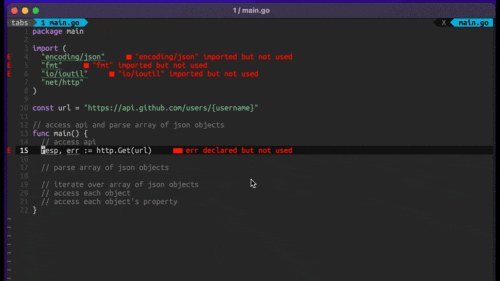
Four Key Reasons to Learn Markdown
Back-End Leveling UpWriting documentation is fun—really, really fun. I know some engineers may disagree with me, but as a technical writer, creating quality documentation that will...

Is your code using the right approach to decomposition? Maybe you’re convinced of the value of breaking large chunks of code into smaller pieces, but are you familiar with the different ways it can be done? Each of these decompositions has its own pros and cons, and learning about them will help you choose the best approach for your situation.
To illustrate the different approaches to decomposition,
let’s take a look at this combat calculation for a role-playing game I’m building:
damage = attack_rating *
Random.new.rand(0.9..1.0) *
(256.0 - defense_rating) / 256.0 +
1
That calculation is a little complex:
The fact that I had to explain the code is a bad sign:
it means the code doesn’t communicate its intent without additional commentary.
Let’s look at how decomposition can make its meaning clearer.
One way to decompose this expression is to break it up into steps,
storing the result of each step in a variable.
This can be referred to as “reassignment,”
because one variable has different values assigned to it at different times:
damage = attack_rating
damage *= Random.new.rand(0.9..1.0)
damage *= (256.0 - defense_rating) / 256.0
damage += 1
Because each step is much shorter than the original calculation,
the whole is easier to take in.
Unfortunately, the unchanging variable name leaves each step’s meaning just as unexplained as it was before.
This weakness is addressed by other decompositions, so it’s almost always better to use a different approach.
Using multiple variables is the simplest way you can improve the reassigment decomposition.
You can assign each step to a separate variable with a descriptive name:
attack_modifier = Random.new.rand(0.9..1.0)
defense_modifier = (256.0 - defense_rating) / 256.0
attack_damage = attack_rating * attack_modifier
damage_after_defense = attack_damage * defense_modifier
damage_with_scratch = damage_after_defense + 1
Step variables can be reused within the scope of the function they’re defined in, but not elsewhere.
One downside is that the surrounding function still contains every detail of the calculation,
making it difficult to get a high-level understanding.
Other decompositions provide more levels of abstraction and allow code to be reused more broadly.
In a step variable decomposition, each variable names what it’s computing.
Function names do the same thing,
which suggests that we could convert each variable into a function.
These functions can be chained together to build up the calculation, passing return values from one into another:
scratch(defend(randomize_damage(attack_rating), defense_rating))
def randomize_damage(attack_rating, rng = Random.new)
attack_rating * rng.rand(0.9..1.0)
end
def defend(damage, defense_rating)
damage * damage_modifier(defense_rating)
end
def damage_modifier(defense_rating)
(256.0 - defense_rating) / 256.0
end
def scratch(damage)
damage + 1
end
With functional chaining, you can read the high-level sequence of operations without needing to think about how each is implemented.
But there’s a related con: that sequence of functions is called from the inside-out,
making it a bit difficult to follow the flow.
To address this, many functional languages provide a pipe operator to turn the expression inside-out:
attack_rating |> randomize_damage
|> defend(defense_rating)
|> scratch
Making chainable functions public allows the rest of your app to recombine them in different ways.
If you instead want to limit how much your app is coupled to the implementation of these functions,
you can make them private and use them to build up simpler public functions:
def damage_for_attack(attack_rating, defense_rating)
scratch(defend(randomize_damage(attack_rating), defense_rating))
end
Method chaining is an object-oriented alternative to function chaining.
A method chain is where a series of methods is called on an object without repeating the name of the object.
This is done by having each chained method change the state of the object it’s called on,
then return that object so it’s available for the next link in the chain:
damage = Damage.new(attack_rating)
.randomize
.apply_defense(defense_rating)
.apply_scratch_damage
.amount
class Damage
def initialize(damage_amount)
@damage_amount = damage_amount
end
def randomize
@damage_amount *= Random.new.rand(0.9..1.0)
self
end
def apply_defense(defense_rating)
@damage_amount *= (256.0 - defense_rating) / 256.0
self
end
def apply_scratch_damage
@damage_amount += 1
self
end
def amount
@damage_amount
end
end
Method chaining provides the same level of re-use as a public function chain,
as well as the same cost in terms of coupling to implementation details.
If you want to hide these details, rather than making a method chain private, there’s another option.
A calculation can be split up into a “tree” of private methods that each performs part of the calculation. Each method might use data from instance variables or from other private methods. Ruby makes this decomposition especially readable by allowing you to call methods without parentheses (sometimes referred to as “barewords”):
def damage
(attack_damage * defense_modifier) + scratch_damage
end
private
def attack_damage
attack_rating * attack_modifier
end
def attack_modifier
rng.rand(0.9..1.0)
end
def defense_modifier
(max_defense_rating - defense_rating) /
max_defense_rating
end
def max_defense_rating
256.0
end
def scratch_damage
1
end
The “tree” is really a tree of multiple levels of abstraction.
For example, looking at damage,
we can see it is calculated from attack_damage, defense_modifier, and scratch_damage,
but we can’t see what those are calculated from without stepping down a level.
These levels of abstraction can be an advantage or a disadvantage,
depending on how visible that information needs to be.
I never recommend using reassignment,
because readability is almost always improved by using step variables instead.
But the other types of decomposition above all have strengths that make them useful,
depending on the context. Here are a few factors to consider:
Lately, I’ve mostly been working in Ruby on a team where private method trees are common, so that’s my go-to approach.
But I’m just starting to work on some Objective-C code,
and I’m following the team’s existing pattern of using step variables more than private methods.
As I learn the reasons for this choice, I’ll be able to see if I want to suggest other decompositions.
The next time you’re in your codebase,
keep an eye out for the types of decomposition you find.
Try out a new approach to decomposition,
and see if it improves your code!

Writing documentation is fun—really, really fun. I know some engineers may disagree with me, but as a technical writer, creating quality documentation that will...

Humanity has come a long way in its technological journey. We have reached the cusp of an age in which the concepts we have...

Go 1.18 has finally landed, and with it comes its own flavor of generics. In a previous post, we went over the accepted proposal and dove...